Ageing increases chronic inflammation, known as "inflammaging", driven by pro-inflammatory cytokines like IL-6, IL-1, and TNF-α. This contributes to slower healing, weakened immune responses, and higher risks of age-related diseases like cardiovascular issues and neurodegeneration.
Key Points:
- What happens with ageing? Chronic low-level inflammation becomes the baseline, disrupting tissue repair and immune function.
- Main culprits: Cytokines such as IL-6, IL-1, and TNF-α stay elevated in older tissues, fueled by senescent cells and oxidative stress.
- Impact on health: Slower healing, reduced stem cell function, and higher risks of diseases like heart disease, arthritis, and Alzheimer's.
- How to reduce inflammation: Lifestyle changes (Mediterranean diet, exercise, sleep), supplements (Vitamin D, aged garlic extract), and emerging therapies like monoclonal antibodies.
Quick Comparison: Young vs. Aging Tissues
| Aspect | Young Tissues | Ageing Tissues |
|---|---|---|
| Inflammation Resolution | Fast and efficient | Slow and prolonged |
| Immune Cell Function | Highly responsive | Declines with age |
| Cytokine Levels | Controlled | Elevated (e.g., IL-6) |
| Healing Speed | Rapid | Delayed |
Managing inflammaging through diet, exercise, and targeted therapies can help mitigate its effects on health and ageing.
Cytokine Changes During Ageing
Higher Cytokine Levels in Older Tissues
As tissues grow older, their ability to manage inflammation changes. Elevated levels of cytokines like IL-6, IL-8, IL-2, IFN-γ, and TNF-α are common in ageing tissues, contributing to a chronic inflammatory state [1]. Senescent cells, through their SASP (senescence-associated secretory phenotype), release inflammatory molecules - especially IL-6 - that sustain this inflammation [2]. This is a stark contrast to younger tissues, where inflammation resolves more quickly and efficiently.
"Cytokine dysregulation is believed to play a key role in the remodeling of the immune system at older age, with evidence pointing to an inability to fine-control systemic inflammation, which seems to be a marker of unsuccessful ageing." – Irene Maeve Rea et al [2].
Young vs. Old Tissue Responses
Ageing tissues don't just have higher cytokine levels - they also respond to inflammation differently. Here's how young and old tissues compare [2]:
| Aspect | Young Tissues | Ageing Tissues |
|---|---|---|
| IL-2 Production | Normal levels | Markedly reduced |
| Inflammation Resolution | Fast and effective | Slow and inefficient |
| IL-1R Antagonist | Low levels | Increased with age |
| Immune Cell Function | Highly responsive | Declines with age-related changes |
These shifts highlight how ageing disrupts immune regulation. For instance, studies on bone marrow reveal that senescent mesenchymal stem cells (MSCs) release inflammatory factors that interfere with the function of younger hematopoietic stem cells (HSCs) [3].
This dysregulation leads to persistent inflammation, overactive NF-κB signaling, accumulation of inflammatory factors, and increased oxidative stress and DNA damage [2].
Emerging therapies are showing potential in addressing these changes. One example is canakinumab, a monoclonal antibody targeting IL-1β, which has been linked to a 15% reduction in recurrent cardiovascular events in older adults - independent of its effects on cholesterol levels [2].
Causes of Age-Related Inflammation
Senescent Cell Secretions (SASP)
Senescent cells contribute to age-related inflammation through their secretory phenotype, known as SASP. These cells consistently release inflammatory signals, which intensify with age. For instance, studies reveal that 73.07% of osteocytes in ageing alveolar bone samples show senescence‐associated distension of satellites (SADS), compared to only 30.69% in younger samples [4].
Key SASP activities include:
- Releasing pro-inflammatory cytokines
- Secreting proteins that degrade the extracellular matrix
- Producing extracellular vesicles that interfere with normal cell function
- Inducing senescence in nearby cells
"Cellular senescence reflects a direct response to accumulated DNA damage." [4]
In addition to these secretions, the ageing immune system weakens, further amplifying inflammation.
Changes in Immune Function
Beyond SASP, shifts in immune function with age also drive chronic inflammation. These changes include:
| Immune System Change | Impact on Inflammation |
|---|---|
| Reduced receptor diversity | Hinders proper immune recognition |
| Immune cell exhaustion | Weakens infection control |
| Impaired memory formation | Limits effective immune responses |
| Declined surveillance | Triggers more inflammatory events |
Research highlights that individuals aged 65 and older show a lower frequency of IL-17-producing cells within their CD4+ T cell memory subset compared to younger adults [2]. These immune system changes, combined with cellular stress, are central to the persistent inflammation seen in ageing tissues.
Cell Stress and Mitochondrial Changes
Adding to immune system declines, cellular stress plays a major role in sustaining inflammation in older tissues. Oxidative stress damages key cellular components, leading to DNA mutations and lipid oxidation. Meanwhile, mitochondrial dysfunction increases reactive oxygen species and disrupts energy production, creating a cycle that keeps inflammation elevated.
"The root causes of ageing and age-related diseases are oxidation by free radicals and inflammation, which are reciprocally generated." [5]
sbb-itb-55c436e
Effects on Health and Healing
Changes in Stem Cell Function
Inflammation disrupts the ability of stem cells to renew themselves, particularly in ageing tissues. These changes vary depending on the type of stem cell:
| Stem Cell Type | Age-Related Changes | Impact on Health |
|---|---|---|
| HSCs (Hematopoietic Stem Cells) | Increased myeloid bias | Reduced production of immune cells |
| SSPCs (Skeletal Stem and Progenitor Cells) | Fewer cells | Slower fracture healing |
Research shows that middle-aged SSPCs age at a rate four times faster than young SSPCs [6]. These changes in stem cell function are a direct cause of slower tissue repair in older adults.
Slower Healing in Ageing Adults
Prolonged levels of inflammatory markers like IL-6, IL-1, and TNF-α in ageing tissues are a major cause of delayed healing. For instance, the effectiveness of influenza vaccines drops significantly with age, from 41–58% in individuals aged 60–74 to just 29–46% in those 75 and older [3]. This persistent inflammation not only slows recovery but also increases the likelihood of disease.
Link to Disease Development
Chronic inflammation caused by cytokines plays a key role in the development of many age-related diseases. Specific inflammatory markers are tied to different conditions:
| Disease Type | Inflammatory Effects | Key Cytokines |
|---|---|---|
| Neurodegenerative | Damage to brain tissue | IL-6, TNF-α |
| Cardiovascular | Inflammation in blood vessels | IL-1β, IL-6 |
| Bone/Joint | Breakdown of tissue | TNF-α, IL-1 |
One study found that treating 52-week-old mice with sodium salicylate for 8 weeks reduced the levels of pro-inflammatory cytokines like Rela, Cox2, and Il1b in SSPCs, effectively reversing signs of chronic inflammation [6]. Interestingly, research suggests that women manage inflammatory responses more effectively than men, as older males typically show higher activity in inflammation-related pathways [3].
Methods to Reduce Age-Related Inflammation
Daily Habits That Lower Inflammation
Making small, consistent changes to your daily routine can help manage age-related inflammation. A diet inspired by Mediterranean eating habits - packed with fatty fish, leafy greens, and olive oil - has been shown to reduce inflammation. Swapping out processed foods for whole grains and adding more fruits to your meals can also lower inflammatory markers like CRP and IL-6.
Regular exercise, even just 20–30 minutes of moderate activity each day, can decrease pro-inflammatory cytokines like IL-6 and TNF-α. A mix of aerobic exercises and resistance training, combined with getting 7–9 hours of quality sleep, can help maintain healthy inflammatory responses as you age.
These habits work well alongside medical treatments to create a balanced approach.
Medications and Supplements
Certain supplements have shown promise in reducing inflammation, according to clinical research:
| Supplement | Daily Dosage | Impact on Inflammation |
|---|---|---|
| Aged Garlic Extract | 3.6g | Lowers TNF-α and IL-6 levels within 6 weeks |
| Vitamin D | 50,000 IU every 20 days | Reduces inflammatory markers over 4 months |
| Ginger | - | Decreases CRP and IL-6 levels |
In one study, a combination of Sambucus nigra, zinc, tyndallized Lactobacillus acidophilus, arabinogalactans, and vitamins D, E, and C improved inflammation markers like IL-6 and CRP in older adults within just 30 days [7].
Pairing these supplements with newer precision therapies offers a well-rounded approach to managing inflammation.
New Treatment Options
Advances in precision medicine are opening up new ways to address inflammation. Researchers studied a TERT activating compound (TAC). In preclinical models simulating adults over 75, this treatment significantly reduced tissue inflammation.
"Epigenetic repression of TERT plays a major role in the cellular decline seen at the onset of ageing by regulating genes involved in learning, memory, muscle performance and inflammation." – Ronald DePinho, M.D.
Decode Age is also exploring personalized solutions by combining detailed gut microbiome analysis with targeted supplements, aligning with these cutting-edge therapies.
Combining these innovative treatments with proven lifestyle changes can lead to better results than relying on either approach alone [8].
Summary and Research Outlook
Main Points
Research highlights how pro-inflammatory cytokines like IL-6, IL-1, and TNF-α are strongly linked to ageing and increased health risks in older adults [9]. These markers negatively affect cardiovascular health, cognitive function, and other organs.
Ageing also prompts senescent cells to release SASP factors, which fuel chronic inflammation and further spread cellular senescence. This impacts various organ systems in specific ways:
| Organ System | Effects of Chronic Inflammation |
|---|---|
| Heart | Enlarged cardiomyocytes and tissue scarring |
| Kidneys | Reduced ability to repair after injury |
| Skin | Disrupted cellular environment |
| Gut | Changes in microbiome that amplify systemic inflammation |
These widespread effects highlight the importance of exploring new research strategies.
Future Research Needs
To better understand the link between inflammation and ageing, researchers are focusing on creating targeted solutions. Current efforts include:
- Single-cell multi-omics analysis to study cellular-level changes
- Spatial genomics to map gene activity within tissues
- Ageing studies in primates and humans for broader insights
FAQs
What are pro-inflammatory cytokines, and why do they matter in ageing?
Pro-inflammatory cytokines are signaling proteins, such as IL-6, IL-1, and TNF-α, that regulate inflammation. In ageing, these cytokines remain chronically elevated, leading to "inflammaging," which disrupts immune function and increases the risk of age-related diseases.
What causes cytokine levels to rise with age?
Age-related inflammation is driven by multiple factors, including:
- Senescent cells releasing inflammatory signals (SASP).
- Oxidative stress damaging cells and triggering inflammation.
- Immune system dysfunction, reducing the body's ability to regulate inflammation.
How does chronic inflammation affect healing in older adults?
Inflammation plays a key role in tissue repair, but when it's prolonged, it disrupts normal healing. Older adults experience:
- Slower wound healing due to impaired stem cell function.
- Weakened immune response, increasing infection risks.
- Higher chances of chronic diseases like arthritis and cardiovascular problems.
What are senescent cells, and how do they contribute to inflammation?
Senescent cells are aged cells that stop dividing but remain metabolically active, releasing inflammatory molecules known as SASP (Senescence-Associated Secretory Phenotype). These signals increase chronic inflammation and can promote further cell ageing.









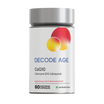

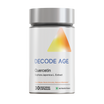

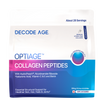

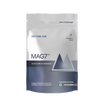






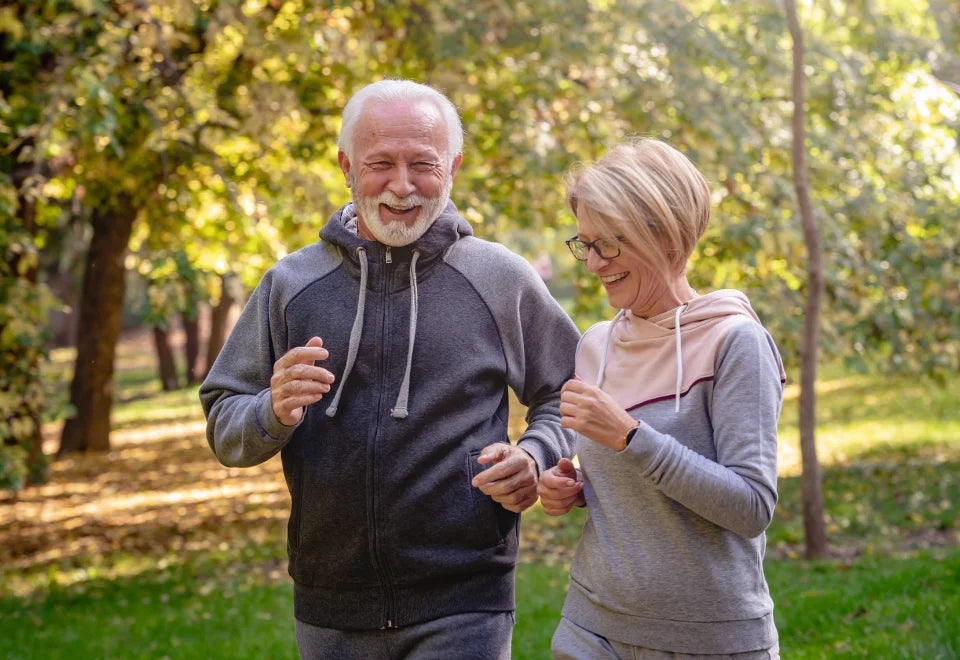



Leave a comment
All comments are moderated before being published.
This site is protected by hCaptcha and the hCaptcha Privacy Policy and Terms of Service apply.